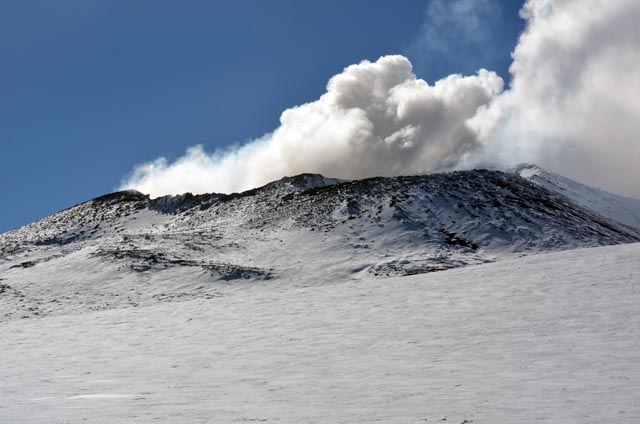|
Page 2/2 - Posted June 28, 2013
Some fungi species in ice caves show extremophile characteristicsStaudigel said development of the protocols is still ongoing in cooperation with members of Kyle’s team, particularly Aaron Curtis, a graduate student at NMT whose research on Erebus has focused on the interplay between the caves and volcano. [See previous article — Subterranean survey: Ice cave research finds connection between heat, gas and pressure.] “Having protocols in place for newer caves will really change the way we’re working in the caves, but it shouldn’t really change what science we can do,” Connell added. “It will just change the way we’re doing the science.” During the 2012-13 field season, researchers collected samples from 10 geothermal ice caves on Mount Erebus to determine the current level of microbial contamination. The analyses will focus on using the fungal communities identified by Connell as the smoking gun for human impacts. In addition to Warren Cave, two other ice caves near Lower Erebus Hut, Hut and Helo caves, have been indentified as likely to be “highly contaminated” from previous visits. At this year’s Antarctic Treaty meeting, the United States and New Zealand pledged to garner more international input into a permanent code of conduct for the Mount Erebus caves and other geothermal sites used for research. Staudigel said it was important “to protect these environments as much as we can,” while still ensuring the ice caves are available to researchers, as well as others, such as journalists and documentary filmmakers who can help tell the story about such unique places to a bigger audience. “If we get kids interested in these amazing environments, we might eventually get microbiologists or whatever,” he said. “The excitement that’s involved with the caves is a fantastic [outreach] tool.” There are already signs that there is an intriguing story to tell about the biology in the Erebus ice caves. Although several of the fungal species found in Warren Cave are cosmopolitan, some have shown to be capable of colonizing minerals and sterile soils, according to the Biology paper. For example, a species called Aureobasidium pullulans has been identified previously in Antarctica, including from the dry soils in the McMurdo Dry Valleys “The ability to withstand radiation and to withstand desiccation appear to be very similar pathways in some fungi,” Connell said, noting that A. pullulans has even been used in radiation experiments in outer space. The Biology paper makes further comparisons between the McMurdo Dry Valleys and volcano ice caves. While both ecosystems are low in nutrients, the soil samples from Warren Cave come from a relatively moist, humid and warm environment thanks to the volcanic vent system. The soils in the Dry Valleys, on the other hand, experience low temperatures and rapid temperate swings, high UV radiation and desiccation. “It’s a much more benign environment in the caves,” Connell said. What else might the soils of the volcano ice caves contain? Analyses are continuing at co-principal investigator Bradley Tebo’s Samples from Warren cave and others may throw yet more light on the dark ecosystems. “The fun part is getting [the samples]. The drudge part is doing all the extractions and everything involved to get the data out of them,” Connell said. “The data is the next fun part.” NSF-funded research in this story: Laurie Connell, University of Maine, Award No. 0739696 |



For USAP Participants |
For The Public |
For Researchers and EducatorsContact UsU.S. National Science FoundationOffice of Polar Programs Geosciences Directorate 2415 Eisenhower Avenue, Suite W7100 Alexandria, VA 22314 Sign up for the NSF Office of Polar Programs newsletter and events. Feedback Form |




